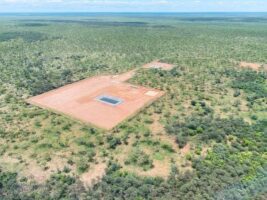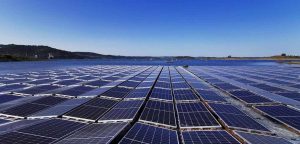The Bureau of Meteorology has painted a bleak picture of the impacts of climate change on Australia, with record warming contributing to more extreme heat events, more frequent bushfires and have emerged as a dire threat to the health of Australia’s coral systems.
In its sixth ‘State of the Climate’ report, the Bureau of Meteorology says Australia has experienced an average warming of 1.44 degrees since 1910, and that this has clearly contributed to an increase in extreme weather events.
The report further added to pressure on the Morrison government, which has recently double down on its opposition to adopting a zero emissions target. The Morrison government has found itself increasingly isolated in its stance on climate change, following zero emissions target commitments from major trading partners, all Australian states and territories, and much of the Australian business community. The latest State of the Climate report brings home the likely and severe consequences of a failure to act on climate change.
The Bureau of Meteorology warns that more substantial cuts to global greenhouse gas emissions are necessary to stabilise the impacts of global warming and that the temporary cut to emissions caused by the Covid-19 pandemic are ‘barely distinguishable’ from normal year-to-year variability.
“Our science clearly shows that, due to increasing greenhouse gases, such as carbon dioxide, in the atmosphere, Australia’s climate is continuing to warm, and the frequency of extreme events such as bushfires, droughts, and marine heatwaves is growing,” director of CSIRO’s Climate Science Centre, Dr Jaci Brown, said.
“These trends, which are projected to continue in the coming decades, are already posing a significant threat to the long-term health and resilience of the coral reef ecosystems around Australia’s coast.”
The Bureau of Meteorology publishes updates to the State of the Climate Report every two years, and in its latest edition says that the clear warming trend being observed in Australia is contributing to longer and more intense fire seasons.
“There has been a significant increase in the frequency of dangerous fire weather days across Australia, particularly during spring and summer, leading to an earlier start to the southern fire season,” the Bureau of Meteorology’s Manager of Climate Environmental Prediction Services Dr Karl Braganza said.
“Climate change is influencing these trends through its impact on temperature, rainfall, and relative humidity, and the resulting change to the fuel moisture content.”
Warming was already being observed in Australia’s climate data, according to the report, with a record 43 ‘extremely warm’ days occurring in 2019, more than triple the number of such days recorded in any year prior to 2000.
The Bureau of Meteorology says that Australia’s oceans had also experienced average warming of around 1 degree since 1910, which had contributed to acidification, and was putting the long-term health of coral systems, like the Great Barrier Reef, at severe risk.
In an earlier summary report of climate change science, the Intergovernmental Panel on Climate Change forecast that between 70 and 90 per cent of the world’s coral reefs would be lost under 1.5 degrees of global warming, with virtually all of the world’s coral reefs destroyed under a 2-degree warming scenario.
In the State of the Climate Report, the Bureau of Meteorology says that the increased and longer-lasting marine heatwaves expected into the future would increase the likelihood of more frequent and severe coral bleaching events in Australia, including impacts on the Great Barrier Reef and the Ningaloo reef.
The Bureau of Meteorology says that while Covid-19 related lockdowns has helped to temporarily reduce greenhouse gas emissions, the impact had been so small as to be indiscernible in measurements of global atmospheric carbon dioxide concentrations.
Covid-19 related restrictions are expected to see much of the world record lower greenhouse gas emissions related to lower domestic and international transport, as well as a slow down in manufacturing throughout 2020. However, these impacts are expected to be temporary.
“The effect on atmospheric greenhouse gas levels from Covid-19 related emissions reduction in 2020 will therefore be barely distinguishable from natural variability and negligible in terms of the mitigation needed to stabilise the climate, ” the report says.
The Bureau of Meteorology also warned that significant impacts on the climate had already been ‘locked in’ by greenhouse gas emissions that have already occurred.
“Cumulative emissions of CO2 will largely determine the speed and magnitude of global mean surface warming during this century and beyond. By 2019, human activities has already emitted 70 per cent of the cumulative emissions allowed to keep global temperatures below 2 degrees of warming,” the report says.
“Because increased levels of CO2 and other long-lived greenhouse gases… persist in the atmosphere for decades to centuries, further warming and sea level rise is inevitable.”
Responding to the report, director of the CSIRO’s Energy group, Dr Marita Niemelae, said that it was crucial that the energy sector worked towards decarbonisation, to achieve longer term reductions in global emissions.
“The energy sector in Australia is navigating a major transition towards net zero emissions by 2050 through smart energy networks, increased share of clean energy sources and integrated new storage solutions. Despite the growing complexity, this shift needs to be affordable, reliable and sustainable,” Dr Niemelae said.
Federal Labor spokesperson for climate change, Mark Butler, said the latest report from the Bureau of Meteorology demonstrated the urgent need for greater action on climate change from the Morrison government, and reiterated a call for the federal government to adopt a zero emissions target.
“Scott Morrison is completely isolated on climate change. Federal Labor, every state and territory government, and Australia’s biggest businesses back net zero emissions by 2050,” Butler said. “We saw what happened last year when Scott Morrison failed to listen to warnings about the bushfires. They can’t let it happen again.”
Chair of Farmers for Climate Action, Charlie Prell, said that farmers were already doing it tough as a result of climate change, with longer droughts and bushfires devastating some rural communities. Prell said farmers feared that what are currently characterised as extreme weather events could become a new normal.
“Every new report on climate change tends to be more dire than the last, and this new research from CSIRO and the Bureau of Meteorology is no exception,” Prell said. “Over the last year, farmers have grappled with droughts, floods and some of the worst fires in living memory. There’s now clear evidence that rising emissions are driving the risk of these events, and without action on climate change, 2019 won’t be exceptional, it will be the norm.”










